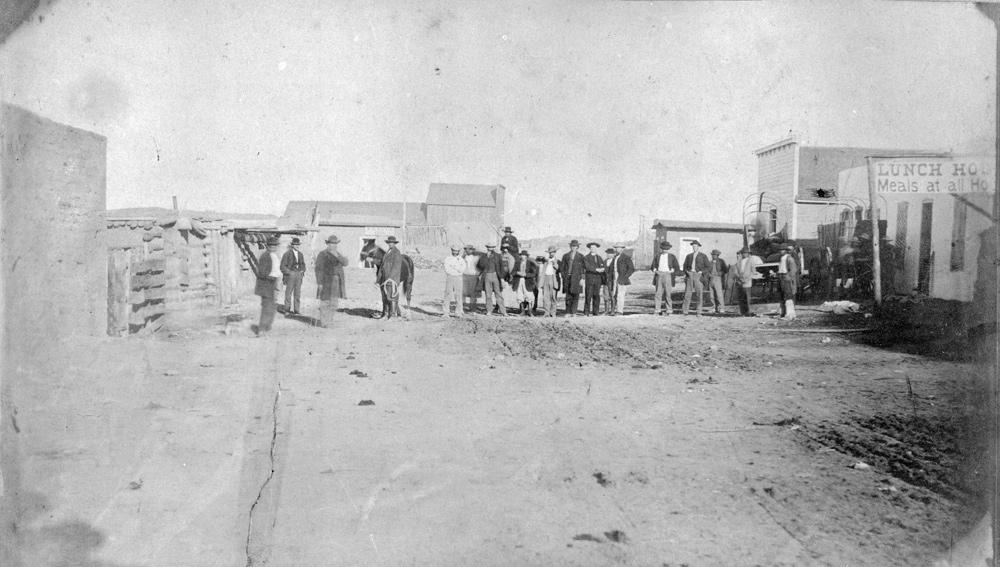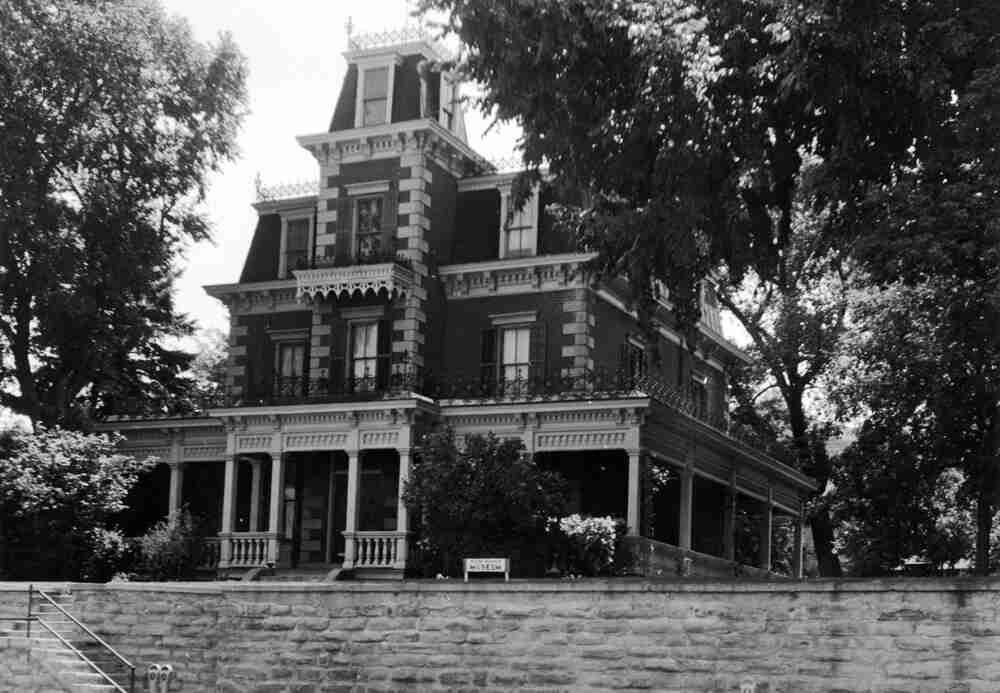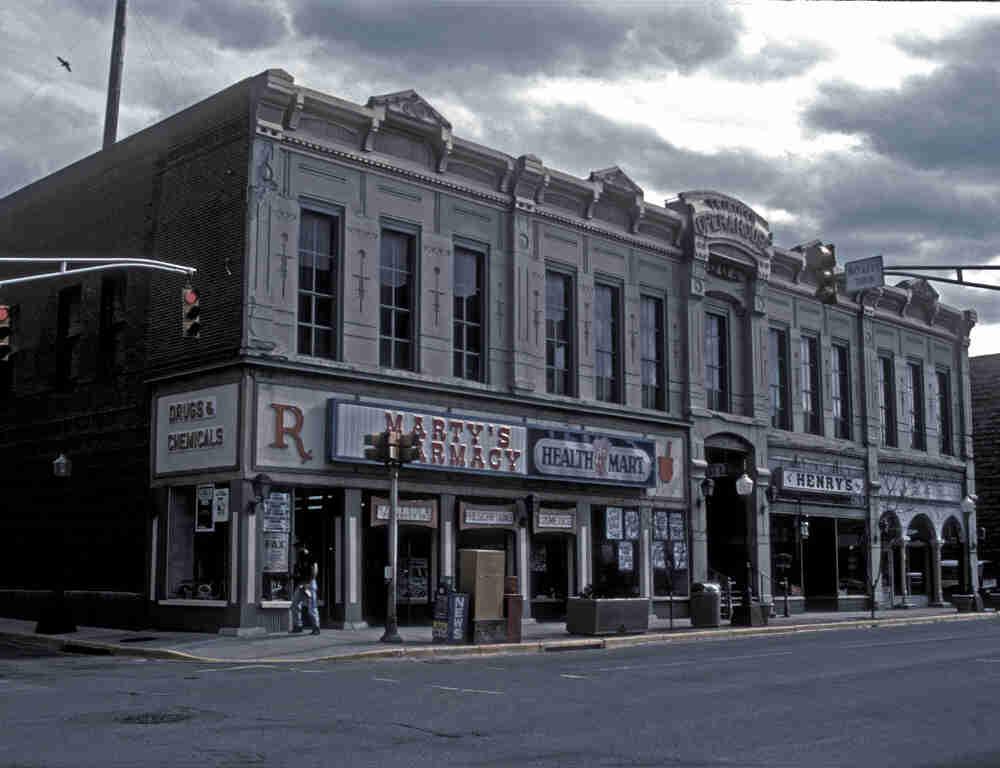El Corazon de Trinidad National Historic District
Full Article
El Corazon de Trinidad (“the heart of Trinidad”) National Historic District covers a particularly well-preserved portion of downtown Trinidad that includes many blocks of adobe and brick buildings from the late nineteenth and early twentieth centuries. Established in 1861 along the Santa Fé Trail, Trinidad flourished from the late 1870s to the 1910s as the capital of southern Colorado’s coal-producing region. Mine closures and economic decline in the twentieth century ended up saving many of the city’s historic buildings, which have been the target of preservation efforts since the 1960s.
Early Settlement
The land around what is now Trinidad was occupied in the eighteenth century by Comanches and Kiowas, in the early nineteenth century by Cheyennes and Arapahos, and in the mid-nineteenth century by Jicarilla Apaches and Southern Utes. Starting in the 1820s, it also lay along the Mountain Branch of the Santa Fé Trail, which passed through the area between La Junta and Raton Pass. Commerce along this branch of the trail increased after the Mexican-American War (1846–48), and the site of present-day Trinidad provided a good spot for traders and wagon trains to set up camp near the Purgatoire River.
Around 1860 Hispano settlement began to push north from New Mexico to the area east of the Sangre de Cristo Mountains. Looking to expand their sheep business, the Gutiérrez family built the first permanent cabins at the site of Trinidad in 1859. Several more families, including that of Felipe Baca, followed in 1860–61; the town may have been named after one of Baca’s daughters. The new settlement developed around the intersection of two different segments of the Santa Fé Trail, which became the town’s two major streets, Main and Commercial. By 1861 the settlers had built irrigation ditches and were starting to raise wheat, corn, and sheep for sale in Pueblo. The town quickly became the main population center in the Purgatoire Valley and served as a vital connection to northern New Mexico and Santa Fe.
Trinidad was originally part of Huerfano County, but as the area’s population grew, the Territory of Colorado created Las Animas County in 1866 and made Trinidad its seat. Largely Hispano in its early years, after the Civil War the city received an influx of Anglo-American settlers drawn by the area’s good land and economic opportunities. By 1870 the city had 600 residents. One of those was the Santa Fé Trail entrepreneur John Hough, who in 1869 built a two-story adobe house along Main Street. In 1873 Felipe and Dolores Baca bought the house, now known as the Baca House, for 22,000 pounds of wool. It is the oldest house still standing in Trinidad.
Boom and Bust
In the late 1870s Trinidad entered a long period of economic prosperity. In 1876 the Denver & Rio Grande Railroad reached El Moro, just a few miles away, and two years later the Atchison, Topeka and Santa Fe Railroad connected to Trinidad. The railroads made the city an important distribution point for traffic between the plains and the Southwest. The railroads also changed the city’s cultural flavor. Although Trinidad retained Spanish-language newspapers, Hispano-owned shops, and a local Hispano elite, it became increasingly tied to a wider Anglo-dominated network of commercial markets and cultural influence.
In the 1880s Trinidad served as the headquarters for several large cattle operations, but the range cattle business declined later that decade as more homesteaders moved to the area. Meanwhile, coal mining and related businesses were building steam. The first coal mines near Trinidad were established by the railroads in the late 1870s. In 1876 William Jackson Palmer of the Denver & Rio Grande started the Southern Colorado Coal and Town Company. The quality of the coal in the area made possible the production of coke, a higher-carbon substance that makes a better fuel, so Palmer built coke ovens at El Moro and used the coke to produce steel in Pueblo mills. Large-scale production began in 1878.
By the 1880s Las Animas and Huerfano Counties were the top two coal-producing counties in Colorado, with the richest coal lying in an easily accessible strip between Trinidad and Walsenburg. Trinidad’s population doubled that decade, from about 2,200 in 1880 to roughly 5,500 in 1890, and several grand brick buildings served as evidence of the city’s growing wealth. In 1879 the Grand Union Hotel (later called the Columbian) went up at the corner of Main and Commercial Streets. A few years later the Jaffa brothers, Jewish merchants, built a 700-seat opera house across Main Street from the hotel. Holy Trinity Catholic Church was completed in 1885, a new city hall in 1888.
One of the more elaborate houses built during this period was the cattle baron Frank Bloom’s 1882 mansion on Main Street, a Second Empire showpiece with a four-story central tower. Bloom’s mansion was near “Aristocracy Hill,” home to many of the city’s wealthiest residents. One of the Jaffa brothers and several other prominent Jews lived in the area. In 1889 they hired the architect Isaac Hamilton Rapp to build Temple Aaron, which was the oldest continuously used Jewish synagogue in the state before it closed in 2016.
Coal production continued to climb in the 1890s and early 1900s, turning Trinidad into a major urban center. In 1892 a series of mergers culminated in the creation of the Colorado Fuel and Iron Company (CF&I), which dominated the area for the next two decades and helped make Colorado the top coal-producing state in the west.
The coal money pouring into Trinidad resulted in a surge of new public buildings, businesses, and houses. In the first decade of the twentieth century the city added a Carnegie Public Library (1904), a new city hall (1909), and a new post office (1910), all with elegant classical elements. New commercial buildings on Main Street included the Toltec Hotel, the Colorado Building, and the Masonic Temple block.
Las Animas and Huerfano Counties had more than 8,000 coal miners in the late 1890s, a number that doubled by World War I. These miners consisted largely of European immigrants who broadened Trinidad’s ethnic mix beyond the older Hispano and Anglo elements to include Germans, Scandinavians, Italians, Slavs, and other southern and eastern European groups. This diversity was reflected in new church parishes and newspapers.
Facing low wages and dangerous working conditions, many miners joined the United Mine Workers and organized several major strikes in the 1890s and early 1900s. In April 1914 tensions between miners and owners reached their climax in the Ludlow Massacre, the deadliest labor conflict in US history, when National Guard troops attacked a tent colony of miners about fifteen miles north of Trinidad.
The Ludlow Massacre did not cause the decline of coal mining in the area around Trinidad, but it serves as a convenient turning point in the region’s history. Over the next few decades, industrial changes and economic depression resulted in greatly reduced demand for coal. Mines in the area began to close in the 1920s. Even when the national economy recovered during and after World War II, mines around Trinidad continued to close because of high extraction costs and increasing competition from other fuels. As a result, Trinidad’s growth ground to a halt. Its population peaked in 1940 at more than 13,000, then started a slow decline for the next fifty years.
Preservation
Largely because it had suffered decades of economic stagnation during which few new buildings were constructed downtown, Trinidad reached the second half of the twentieth century with its Victorian core largely intact. The city began a gradual economic revival based on tourism and historic preservation. In 1955 the Old Baca House and Pioneer Museum opened; the Colorado Historical Society (now History Colorado) acquired it in 1960 and started to operate it as a regional museum. The next year the society acquired the Bloom House on the same block and added it to the museum complex.
In response to growing concerns about the modernization and proposed demolition of some downtown buildings to encourage new development, in 1970 the Trinidad Historical Society conducted a comprehensive survey of the city’s historic buildings. In 1972 El Corazon de Trinidad National Historic District was added to the National Register of Historic Places.
Despite its status as a historic district, downtown Trinidad has not been immune to economic pressures or the effects of time. Several buildings within the historic district have faced the threat of destruction through neglect or redevelopment. In the late 1990s and early 2000s, the nonprofit Colorado Preservation, which promotes historic preservation across the state, listed the Toltec Hotel and the entire Corazon de Trinidad district as “Endangered Places.” Since then grants from the State Historical Fund have helped save several notable buildings, including the Toltec Hotel. Temple Aaron closed in 2016 because its shrinking congregation could not support the building's rising maintenance costs.
History Colorado continues to operate the Trinidad History Museum on a block along East Main Street. Visitors can walk through the Baca-Bloom Heritage Gardens, view exhibits at the Santa Fé Trail Museum, and tour the Baca House and Bloom Mansion. The Santa Fé Trail Museum houses the ticket office and gift shop, and the 1906 Barglow Building serves as the museum’s offices and meeting space. History Colorado restored the Bloom Mansion in the 2010s.
















